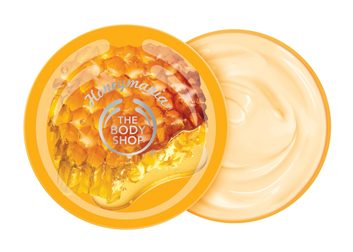Beauty bites: The Body Shop
Little-known facts about familiar labels. In this issue, we learn about a new bath and body-care line

Source: Best Health magazine, October 2013
It’s a beautiful, sunny day, and I’m watching as swarms of bees buzz around their hives at the Toronto Botanical Garden. My hands are soft and they smell sweet, thanks to creams and scrubs I’ve been testing.
I’m at the launch of’The Body Shop’s new bath and body-care line, Honeymania, which will be available this month. It’s made with fair-trade honey from Ethiopia. Honeymania products, says The Body Shop, are made with Sheka honey, whose unique delicious smell comes from flowers in the Ethiopian Afromontane rainforest. ‘We work with 260 beekeepers in Ethiopia to harvest our honey,’ says Marc-Alexandre Risch, general manager for The Body Shop Canada.
The brand was born in 1976, when the late U.K.-based founder Anita Roddick decided to build a company rather than a charity, says Risch, ‘because it was through business that you could have the biggest impact on the world.’ It grew to have an immense effect. ‘We have 25 community programs that help more than 300,000 people around the world,’ says Risch.
Purchased by beauty giant L’Oréal in 2006, The Body Shop has more than 2,500 stores worldwide, 118 of them in Canada. Online shopping at thebodyshop.ca represents a healthy portion of sales. And some of the company’s first products’Hemp Hand Protector, Coconut Body Butter, Tea Tree Oil and White Musk fragrance’are still bestsellers.
Pictured above: The Body Shop Honeymania Body Butter. ($20, 200 mL)
This article originally appeared in the October 2013 issue of Best Health. Subscribe today to get the full Best Health experience’and never miss an issue!




